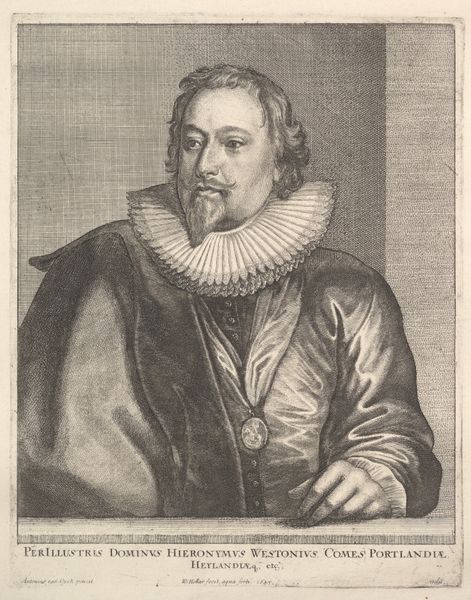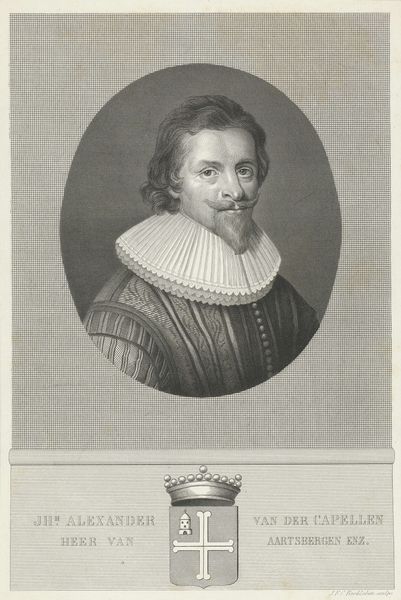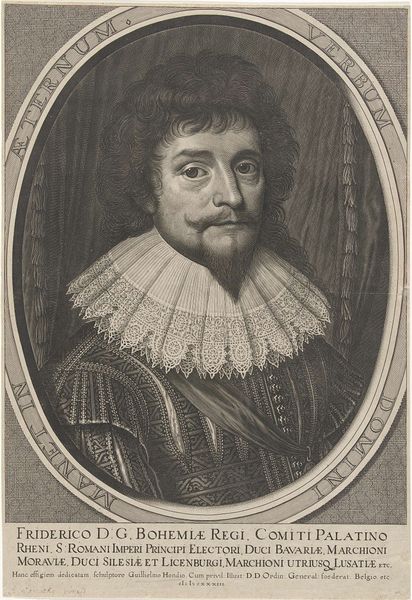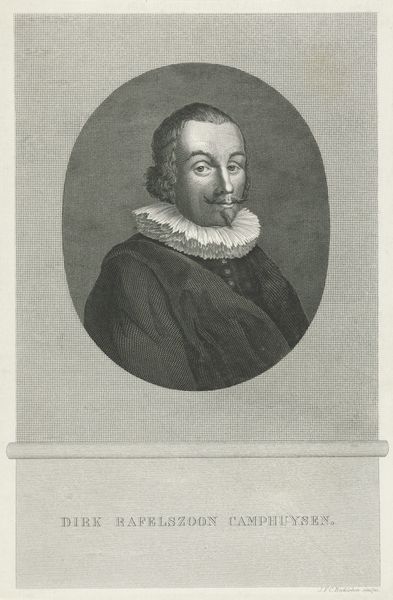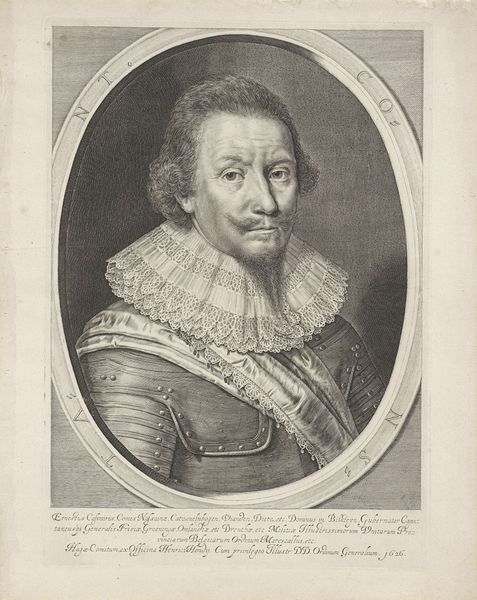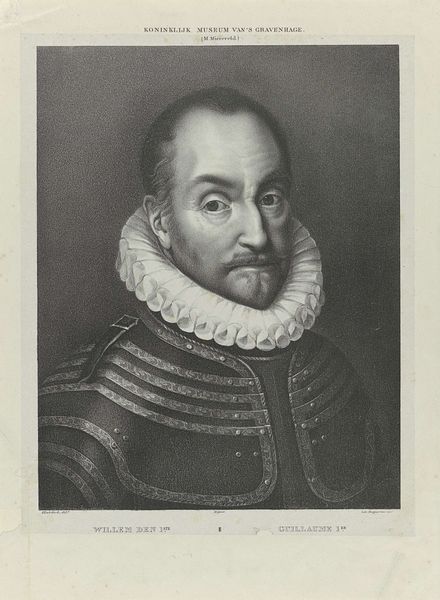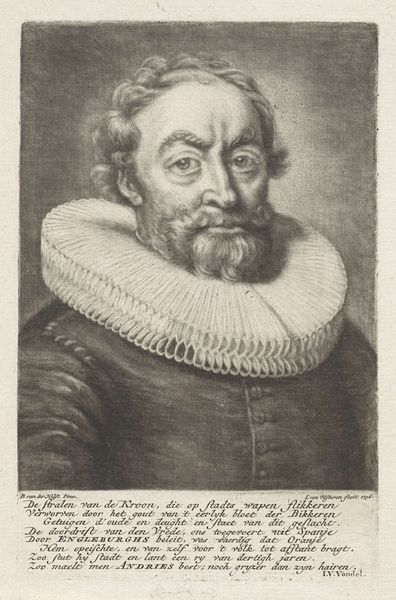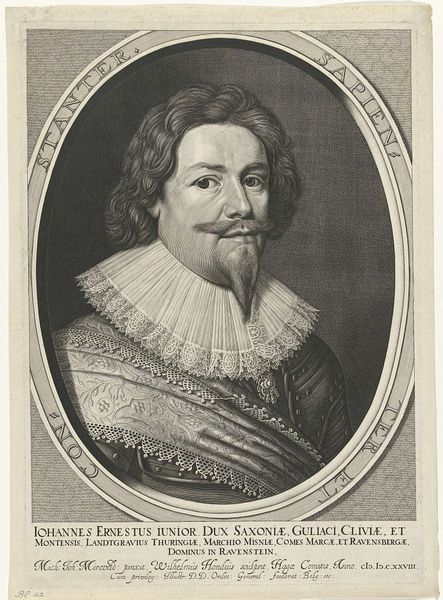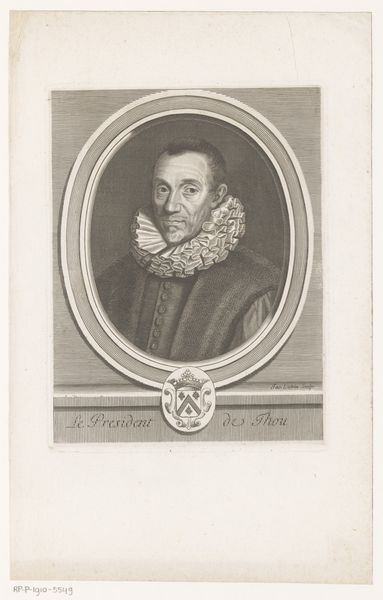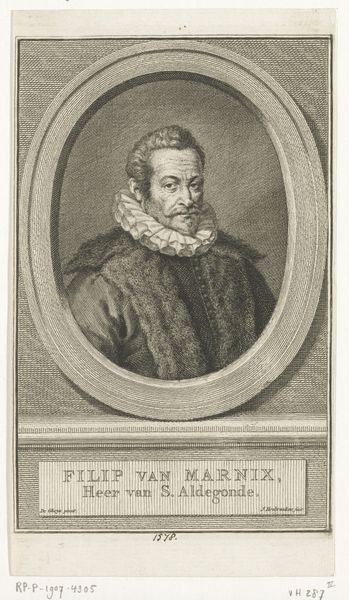
Dimensions: height 124 mm, width 91 mm
Copyright: Rijks Museum: Open Domain
Curator: This engraving from 1763 is titled "Portret van een onbekende edelman", or "Portrait of an Unknown Nobleman", by Antoine de Marcenay de Ghuy. Editor: It strikes me immediately with its sombre tone, achieved through meticulous line work. The ruff frames the subject's face dramatically. Curator: De Ghuy was, himself, a nobleman. Such engravings were a common means of circulating portraits and disseminating status in the 18th century. Consider the process; this wasn't about singular artistic expression but about reproduction and distribution to reaffirm a social hierarchy. Editor: Precisely! But the formal arrangement also speaks volumes. Notice how the contrasting dark garments set off by the meticulously detailed ruff serve as a compositional anchor, directing the viewer’s gaze right to the nobleman’s face. It's masterful control. Curator: It is interesting that such portraits were produced at a time when the nobility's grip on power was beginning to loosen. Printmaking served as a kind of propaganda machine, maintaining their image and perceived authority during a period of social and economic upheaval. Editor: While the societal context is crucial, we also shouldn’t discount the visual effect. See the subtle hatching used to create texture and depth, particularly in the face? The play of light and shadow models his features with precision. Curator: And there are hierarchies even within artistic labor. De Ghuy, a nobleman himself, would likely have overseen workshops where skilled artisans performed the repetitive work of engraving. He benefits both from his class status and theirs. Editor: It reminds me of baroque theatricality: the carefully cultivated persona, captured through posture and gaze. The slightly raised eyebrow lends him an air of intellectual superiority. Curator: Yes, but through an industrial process! A commodity meant for wider consumption that reinforces societal norms. Editor: Well, I see how its elements—tone, light, composition—contribute to an almost archetypal image of aristocratic power and presence, irrespective of production. Curator: It gives us a tangible record of material realities and the complex dance of labor and consumption. Editor: In a way, it showcases how aesthetics served to both reflect and shape notions of power in the era.
Comments
No comments
Be the first to comment and join the conversation on the ultimate creative platform.


